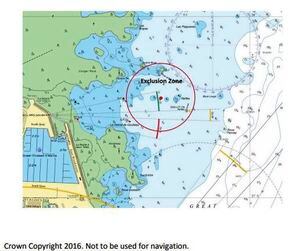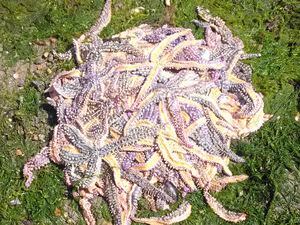WATCH: Suspected unexploded anti-submarine depth charge found close to QE2 marina
ROYAL Navy divers are being called in to tackle a suspected anti-submarine depth charge, which has lain in the seabed for more than 70 years

The Second World War ordnance was discovered by a team of local divers on Wednesday during a routine dive.
Guernsey Habourmaster Captain David Barker said this was the biggest ordnance that had been discovered during his time at harbourmaster, at a metre long and 45cm in circumference.
It is near the Reffee Buoy, close to the QE2 marina entrance.
'We think it is probably an anti-submarine depth charge,' he said.
'It is cylindrical shape, but it is covered in marine growth. We can probably see about 90% of it - only the base is in the sand.'
He noted that the seabed was constantly moving, so the item could have been recently uncovered. Even then, to an untrained eye, it might look like a rock or a barrel.
It is not possible to tell if it is German or British and it could have come from a plane or been dropped from a boat.
'It looks reasonably in tact, but it is hard to tell,' he said.
If it is a depth charge, it would be designed to detonate when it reached a certain depth. The fact it is only in water about six to eight metres deep could explain it not having been activated.
The ordnance is about 500 metres from the east wall of the marina and a 200 metre exclusion zone has been put in around it to keep people safe.
Captain Barker said specialist divers would examine the item and decide the best option. That could involve moving it further from the shore and then detonating it using explosives.
Guernsey Coastguard has been working with Bailiwick Law Enforcement to coordinate an operation to dispose of the device.
A team of divers from the Royal Navy’s explosive ordnance disposal team is expected to visit the island in the coming days to move the device away from its current location for safe disposal.
Application for critical worker exemptions will be made for the divers.
Mariners are being advised to stay away from the exclusion zone.
'This means that, unfortunately, those who wish to enter and leave the QE2 marina will be inconvenienced for a short time, until the device has been removed,' Captain Barker said.
'Thankfully, the discovery was made during a quiet time of year for pleasure vessel traffic, however public safety must be our first concern. Any anchoring and underwater activities are strictly prohibited in the exclusion zone and mariners are to only enter this area to avoid immediate danger.'
No commercial vessel traffic movements into St Peter Port or St Sampson’s harbours’ are expected to be impacted as result of the discovery of the ordnance.





